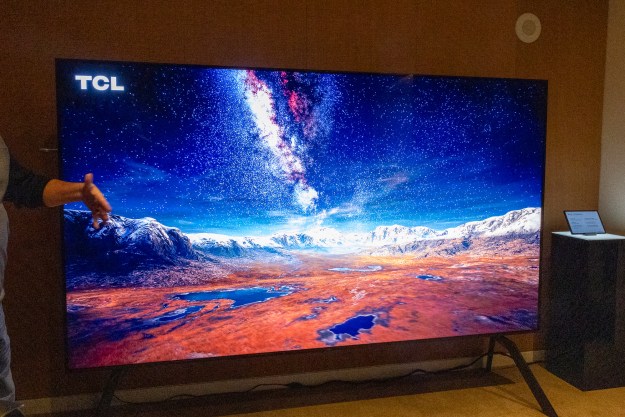LG has at last shown us its TV lineup here at CES 2015, and we have all the details. This year LG is all about OLED, and is unleashing seven new 4K OLED TVs up to 77 inches in size, featuring flexible and curved displays, “Art Slim” design technology, and its WRGB pixel technology. LG has also polished up its 4K TV lineup, but perhaps just as exciting is that we are finally seeing a flat 4K OLED TV, and it promises to be the least expensive OLED TV yet.
At the top of LG’s list for CES 2015 is the EG9900, a 77-inch flexible 4K OLED TV, bringing new functionality to the already incredible 77-inch curved 4K OLED TV from last year that won our Best of CES award. The EG9900’s flexible display means you can have it your way, allowing owners to switch the screen between a flat and curved experience at their preference. The EG9900 will also include a 100W 4.1 Channel speaker system with wireless subwoofer developed by Harman/Kardon, and deca-core processor for faster webOS performance. The EF9800 was also announced, which is a 65-inch flat-screen variant of the EG9900, featuring a 90W speaker system and the same deca-core processor.
Accompanying all new 4K OLED TVs from LG is also its “Art Slim” design technology. Art Slim is what LG is calling its new TV design, focusing on ultra-thin displays with transparent stands, making the TV appear to float in thin air, supposedly making the viewing experience more immersive. Underneath the panel, LG’s
Also appearing by LG in the 4K OLED TV department are the EG9600 and EF9500, both being offered with either 55-inch or 65-inch displays. Both TVs feature a quad-core processor, Harman/kardon audio, and the “Art Floating” displays part of LG’s Art Slim design. The EG9600 will be curved, while the EF 9500 will remain flat – an industry first for
Aside from 4K OLED TVs, LG is also adding to its
LG is also ensuring that its new TVs sport the latest version of webOS, its smart TV operating system bought from HP back in 2013. The new version that LG will launch with its TVs will simplify the user experience, make things more intuitive, and according to LG add a “raft of impressive features.” Inside webOS, LG has secured a partnership with DIRECTV to allow TV owners direct access to their Genie HD DVR and other on-demand content without an additional DIRECTV box. LG is also partnering up with HSN, GoPro, SHOWTIME, iHeartRadio, and others to make tons of new streaming content available through webOS.
Check back with us at Digital Trends as we bring you continuing coverage, video hands-ons, and other in-depth info on LG TVs and more at CES 2015.
Editors' Recommendations
- What we want to see from the next Apple TV 4K
- Samsung’s new 98-inch DU9000 4K TV is just $4,000. Can it beat TCL and Hisense?
- Vizio’s first 86-inch 4K TV is coming soon, for $999
- Hands-on with the Belkin iPhone Mount with MagSafe for Apple TV 4K
- Belkin drops a $50 mount for iPhone video calls on Apple TV 4K


